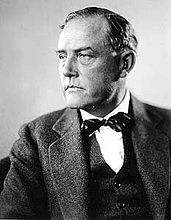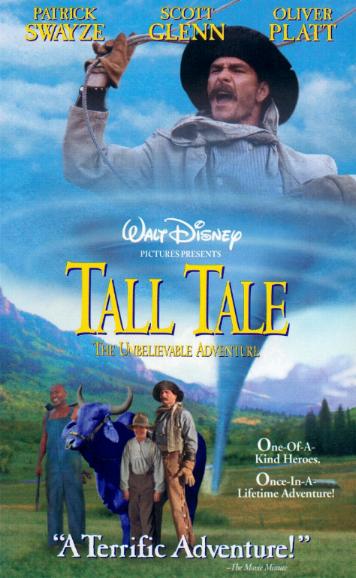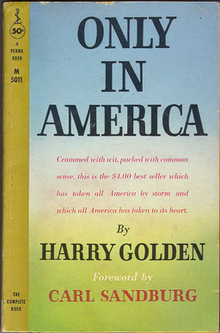(1879-1960)
IMDB Entry
 I could do this entire blog on great but forgotten silent films. All but the very greatest have been forgotten (and often lost) and audiences these days don't seem to have much interest in them. The lack of sound, plus the acting style, just put people off.* But silent films hold up well, if you're willing to put in the effort.
I could do this entire blog on great but forgotten silent films. All but the very greatest have been forgotten (and often lost) and audiences these days don't seem to have much interest in them. The lack of sound, plus the acting style, just put people off.* But silent films hold up well, if you're willing to put in the effort.
Silent filmmakers were far more international that films today. It was fairly easy to shoot new intertitles for a silent film, and the audience didn't have to watch action on the screen while reading the subtitles. That led to strong film industries in Europe, especially in Germany and Sweden. And the greatest Swedish film director of the era was probably Victor Sjöström.
He grew up in Sweden and Brooklyn, NY, and broke into films as an actor and director around 1912, after a establishing a career in the theater in both areas. Sjöström developed his craft and soon began making films with a psychological depth that was unusual for his time. Around the time he had mastered filmmaking, he started adapting screenplays of books by Swedish Nobel Prize winner Selma Lagerlöf. Lagerlöf distrusted what filmmakers might do to her work, but Sjöström seemed to find the formula to make both her and the audiences happy. It was part of this series when, in 1921, he adapted her novel Thy Soul Shall Bear Witness! (Körkarlen) as The Phantom Carriage.
In it, Sjöström starred as a man doomed to drive the carriage the took the souls of the dead to heaven. The film's effects involved some very good double exposures, and were quite advanced for the time.** Its dark mood seemed to strike a chord in the post-World-War-I world. It was probably the masterpiece of the silent Swedish cinema.

Sjöström was on a roll and when a few years later, Lillian Gish wanted to make a movie of The Scarlett Letter,**** she asked for Sjöström, feeling his dark attitude was just what the film needed. She was right. The film is an excellent adaptation and Gish was perfect as Hester.
Evidently, they liked the experience, because two years later, Gish insisted she and Sjöström reteam to make The Wind, his masterpiece.
 The Wind in an intense film of loneliness and madness. Gish is a young woman who moves to the West Texas to live with relatives. But there is tension between her and her cousin's wife and she is forced to leave. With no place to go, she agrees to marry their neighbor, even though she finds him repulsive. But she soon finds out that the constant wind is even worse and slowly begins to go insane.
The Wind in an intense film of loneliness and madness. Gish is a young woman who moves to the West Texas to live with relatives. But there is tension between her and her cousin's wife and she is forced to leave. With no place to go, she agrees to marry their neighbor, even though she finds him repulsive. But she soon finds out that the constant wind is even worse and slowly begins to go insane.
The film is a claustrophobic look at the difficulty of living on the frontier. Gish is magnificent and Sjöström captures her feeling of helplessness in the face of relentless force.
Alas, the silent era was ending. The Wind was one of the last silent films MGM released; they moved quickly into talkies.
But Sjöström did not. He didn't like the restrictions the new sound equipment put on what he could do. He did the talkie A Lady to Love in 1930, then moved back to Sweden for three more films, after which he returned to the theater, acting and directing there.
He also acted occasionally in films. In 1950, Ingmar Bergman, who had loved The Phantom Carriage so much that he watched it every year, cast him in his film To Joy. But Bergman saved his best role for Sjöström in 1957, when he cast him in the lead of Wild Strawberries, a movie that was filled with homages to The Phantom Carriage.
Sjöström died in 1960, known for the Bergman film, but forgotten as one of the pioneers of the silent film. Anyone who loves the medium needs to seek him out.
_______________________________________________
* I'm appalled at comments about how actors in other film eras are called "bad," simply because their style is different than what people are used to. Our current acting styles may look just as foolish to people in another 90 year, but they're treated as though that's the only way of acting.
**It may have been the source of the standard movie image of the see-through ghost.
***I guess Americans didn't like umlauts. This was before heavy metal music, of course.
****Over studio objections, who didn't want to make a movie about an unwed mother. Gish argued the book was an American classic and taught in the schools, so there was no point to shying away from it.
 (1995)
(1995)  The story centered on the Brock family. Jimmy Brock (Tom Skerritt) is the town sheriff, married to Jill (Kathy Baker), who's a doctor. They have to juggle their careers as well as their three kids, Kimberly (Holly Marie Combs), Matthew (Justin Shankerow), and Zach (Adam Wylie). Kenny Lacos (Costas Mandylor) and Maxine Stewart (Lauren Holly) make up the sheriff's department, along with their dispatcher Ginny (Zelda Rubenstein).
The story centered on the Brock family. Jimmy Brock (Tom Skerritt) is the town sheriff, married to Jill (Kathy Baker), who's a doctor. They have to juggle their careers as well as their three kids, Kimberly (Holly Marie Combs), Matthew (Justin Shankerow), and Zach (Adam Wylie). Kenny Lacos (Costas Mandylor) and Maxine Stewart (Lauren Holly) make up the sheriff's department, along with their dispatcher Ginny (Zelda Rubenstein).

 Harry Golden led an unusual life. Born in the Ukrane, he ended up in New York City at the age of three and grew up on the Lower East Side. He became a stockbroker, but lost his job in the 1929 crash and was convicted of wire fraud, for which he spent five years in prison. Once released, he moved to North Carolina where he got a job writing for the Charlotte Observer and in 1944 began to put out a bimonthly newsletter called The Carolina Israelite.
Harry Golden led an unusual life. Born in the Ukrane, he ended up in New York City at the age of three and grew up on the Lower East Side. He became a stockbroker, but lost his job in the 1929 crash and was convicted of wire fraud, for which he spent five years in prison. Once released, he moved to North Carolina where he got a job writing for the Charlotte Observer and in 1944 began to put out a bimonthly newsletter called The Carolina Israelite. The essays in the book, like much of Golden's writings, fell into three categories. He wrote on general issues for Jewish Americans of the time, with a unique viewpoint as a Jew in one of the least Jewish areas of the country. He was also a staunch supporter of racial equality and wrote eloquently against the segregated South. But the most popular essays were when he reminisced about his boyhood in New York before World War I.
The essays in the book, like much of Golden's writings, fell into three categories. He wrote on general issues for Jewish Americans of the time, with a unique viewpoint as a Jew in one of the least Jewish areas of the country. He was also a staunch supporter of racial equality and wrote eloquently against the segregated South. But the most popular essays were when he reminisced about his boyhood in New York before World War I. The center of the story was, of course, Mary Hartman (Louise Lasser), a housewife in the fictional Fernwood, Ohio. She was a perpetual innocent (even when talking about some far-from-innocent scenarios) who tried to look on the bright side of things. When the neighbors are mass murdered and her grandfather (Victor Killian***) is discovered to be the Fernwood Flasher).
The center of the story was, of course, Mary Hartman (Louise Lasser), a housewife in the fictional Fernwood, Ohio. She was a perpetual innocent (even when talking about some far-from-innocent scenarios) who tried to look on the bright side of things. When the neighbors are mass murdered and her grandfather (Victor Killian***) is discovered to be the Fernwood Flasher).